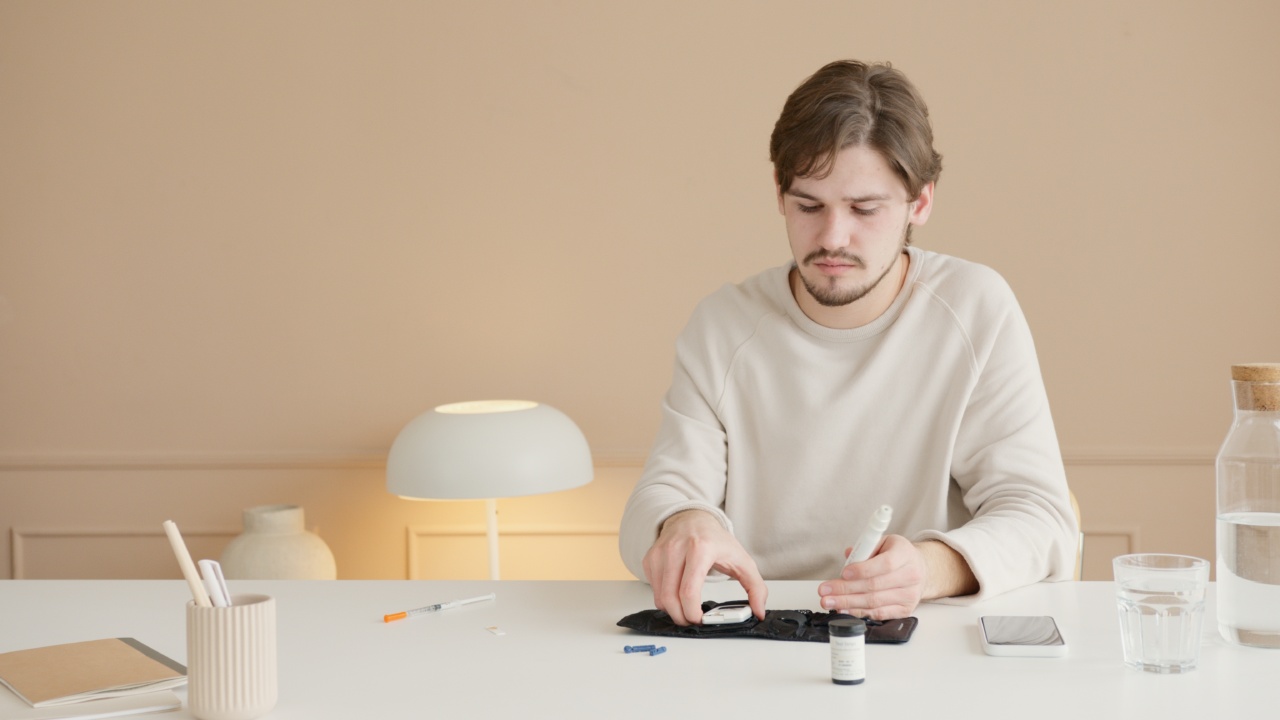Diabetes is a chronic condition that affects millions of people worldwide. It occurs when the body either does not produce enough insulin or cannot effectively use the insulin it produces.
Insulin is a hormone that regulates blood sugar levels, and when it is not functioning properly, it can lead to a buildup of glucose in the blood. High blood sugar levels can cause a wide range of complications and health issues, making it essential for individuals with diabetes to regularly monitor their blood sugar levels.
In this article, we will discuss the importance of blood sugar monitoring for diabetes management and the benefits it can provide for overall health and well-being.
The Role of Blood Sugar Monitoring
Blood sugar monitoring is a critical aspect of diabetes management as it helps individuals keep their blood sugar levels within a desirable range.
By tracking blood sugar levels regularly, individuals with diabetes can make informed decisions regarding their food choices, medication regimen, and overall lifestyle.
Preventing Hypoglycemia and Hyperglycemia
One of the primary goals of blood sugar monitoring is to prevent episodes of hypoglycemia (low blood sugar) and hyperglycemia (high blood sugar) – both of which can have severe consequences for someone with diabetes.
Hypoglycemia occurs when blood sugar levels drop too low. This can happen due to a variety of reasons such as skipping meals, excessive exercise, or taking too much insulin.
Symptoms of hypoglycemia include shakiness, irritability, confusion, rapid heartbeat, and even loss of consciousness.
By regularly monitoring blood sugar levels, individuals with diabetes can identify when their blood sugar is getting too low and take appropriate action, such as consuming glucose tablets or sugary foods to raise their blood sugar back to a safe level.
On the other hand, hyperglycemia occurs when blood sugar levels are consistently high. This can lead to long-term complications such as nerve damage, kidney problems, and cardiovascular diseases.
Regular blood sugar monitoring enables individuals to identify patterns and triggers that may be causing high blood sugar levels, allowing them to take steps to lower their levels. This may include adjusting their medication, increasing physical activity, or making changes to their diet.
Informing Medication Regimen
Blood sugar monitoring provides individuals with valuable data that can help them fine-tune their medication regimen.
By measuring blood sugar levels before and after meals, individuals can determine how certain foods affect their blood sugar levels and adjust their insulin dosage accordingly. This personalized approach to diabetes management can lead to better blood sugar control and reduce the risk of complications.
Promoting a Healthy Lifestyle
Blood sugar monitoring also promotes a healthy lifestyle and encourages individuals with diabetes to take an active role in managing their condition.
By regularly tracking their blood sugar levels, individuals become more aware of the impact of their daily choices on their health. This awareness often motivates them to make healthier food choices, engage in regular exercise, and practice stress management techniques – all of which contribute to improved blood sugar control and overall well-being.
Identifying Patterns and Trends
Continuous blood sugar monitoring can help individuals identify patterns and trends in their blood sugar levels.
By analyzing their glucose readings over an extended period, individuals can determine how different factors, such as meals, physical activity, or stress, affect their blood sugar levels. This information can assist in determining the best course of action to maintain stable blood sugar levels and prevent complications.
Enhancing Patient-Doctor Communication
Regular blood sugar monitoring provides individuals with concrete data to share with their healthcare professionals.
By sharing blood sugar readings and discussing any challenges or concerns, individuals can work together with their doctors to adjust treatment plans, medication dosages, or make necessary lifestyle modifications. This collaboration ensures that individuals receive personalized care tailored to their specific needs and goals.
Choosing the Right Monitoring Device
Various blood sugar monitoring devices are available in the market today, ranging from traditional fingerstick meters to continuous glucose monitoring (CGM) systems. The choice of device depends on individual preferences, lifestyle, and budget.
Fingerstick meters are typically more affordable and require manual testing throughout the day. CGM systems, on the other hand, provide continuous real-time readings and can be particularly beneficial for individuals who want to monitor their blood sugar levels constantly.
Setting Realistic Goals
Blood sugar monitoring helps individuals set realistic goals for managing their diabetes. By regularly tracking their blood sugar levels, individuals can see their progress and make adjustments as needed to achieve optimal blood sugar control.
It is important to work closely with healthcare professionals to establish personalized targets for blood sugar levels and understand the steps required to reach those goals.
Improving Quality of Life
Ultimately, regular blood sugar monitoring plays a crucial role in improving the quality of life for individuals with diabetes.
By maintaining stable blood sugar levels, individuals can minimize the risk of complications and enjoy a healthier, more active lifestyle. Blood sugar monitoring empowers individuals to take control of their diabetes management and empowers them to make informed decisions to support their overall well-being.
In Conclusion
Blood sugar monitoring is an essential aspect of diabetes management.
By regularly tracking blood sugar levels, individuals can prevent episodes of hypoglycemia and hyperglycemia, fine-tune their medication regimen, make healthier lifestyle choices, identify patterns and trends, enhance patient-doctor communication, and ultimately improve their quality of life. It is important for individuals with diabetes to work closely with their healthcare professionals to establish a blood sugar monitoring routine that meets their specific needs and goals.
With proper monitoring and diligent self-care, individuals with diabetes can effectively manage their condition and reduce the risk of complications.





























